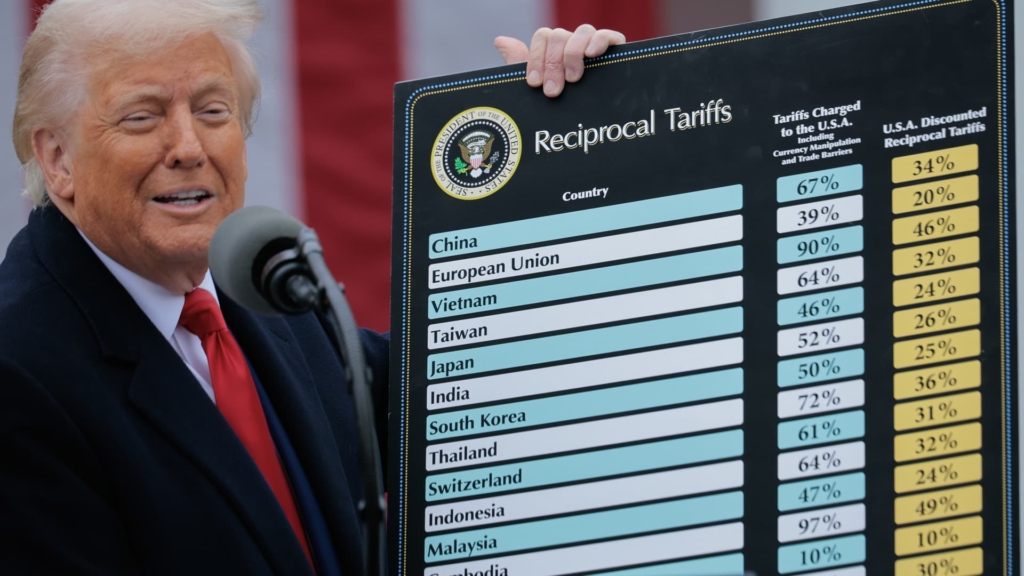Financial markets are closely analyzing the recent announcement by President Donald Trump’s administration regarding sweeping tariffs on imports, a move that has unsettled global economic stability.
During the announcement, Trump and his team shared extensive charts on social media, showcasing tariff rates allegedly imposed by various nations on U.S. goods. The documentation included claims of “Currency Manipulation and Trade Barriers” that purportedly influenced these rates.
A corresponding column highlighted the new tariff rates set by the U.S. for individual countries, alongside the European Union.
According to assessments, the tariffs indicated by the administration are generally around half of what Trump claims that other countries charge the U.S. However, Finance Newso has been unable to independently verify the validity of these figures.
Market analysts attempted to dissect the methodology behind these figures, yielding perplexing results. Notably, journalist James Surowiecki pointed out that the U.S. seemed to have applied a formula whereby the trade deficit was divided by imports from individual countries to derive the tariff rates.
This approach deviates from traditional tariff calculation methods, indicating that the U.S. may have focused solely on the goods trade deficit, disregarding services. For example, the U.S. claims that China’s tariffs stand at 67%. With a trade deficit of $295.4 billion against $438.9 billion in imports from China in 2024, this calculation holds up. Similar figures were found for Vietnam.
“This formula emphasizes trade imbalances rather than a genuine reciprocal tariff framework,” commented Trinh Nguyen, a senior economist at Natixis covering emerging Asia. “This poses challenges for many Asian countries, particularly those with smaller economies, in their ability to comply with U.S. tariff reduction demands due to the benchmark of purchasing more American goods than what they export to the U.S.”
Nguyen further noted, “U.S. goods tend to be pricier, and the purchasing power for countries facing the highest tariffs is limited. For instance, Vietnam, despite having a significant trade surplus with the U.S., has already reduced tariffs in anticipation of these announcements.”
Additionally, it seems that a 10% tariff has been applied for regions where the U.S. has a trade surplus.
The U.S. Trade Representative (USTR) outlined its tariff strategy on its website, which somewhat mirrors the findings of analysts while indicating certain distinctions.
The USTR explained, “While calculating the trade deficit impacts of thousands of tariff and regulatory policies is intricate, their combined effects can be approximated by computing the tariff level necessary to bring bilateral trade deficits to zero.” It added that if trade deficits persist due to tariff and non-tariff obligations, then the derived tariff rate should be considered reciprocal and equitable.
Furthermore, the USTR provided estimates on how sensitive demand for imports is to changes in prices, alongside the impact of heightened tariffs on the cost of imported goods.
A detailed screenshot from the USTR’s website illustrating the methodology has also emerged:
Some experts have pointed out that the U.S. government’s approach may provide it with greater flexibility in negotiations.
Rob Subbaraman, head of global macro research at Nomura, noted, “The ambiguity surrounding the tariff rates may allow for more leeway in reaching agreements, though this could ultimately undermine U.S. credibility.”
— Finance Newso’s Kevin Breuninger contributed to this article.


























